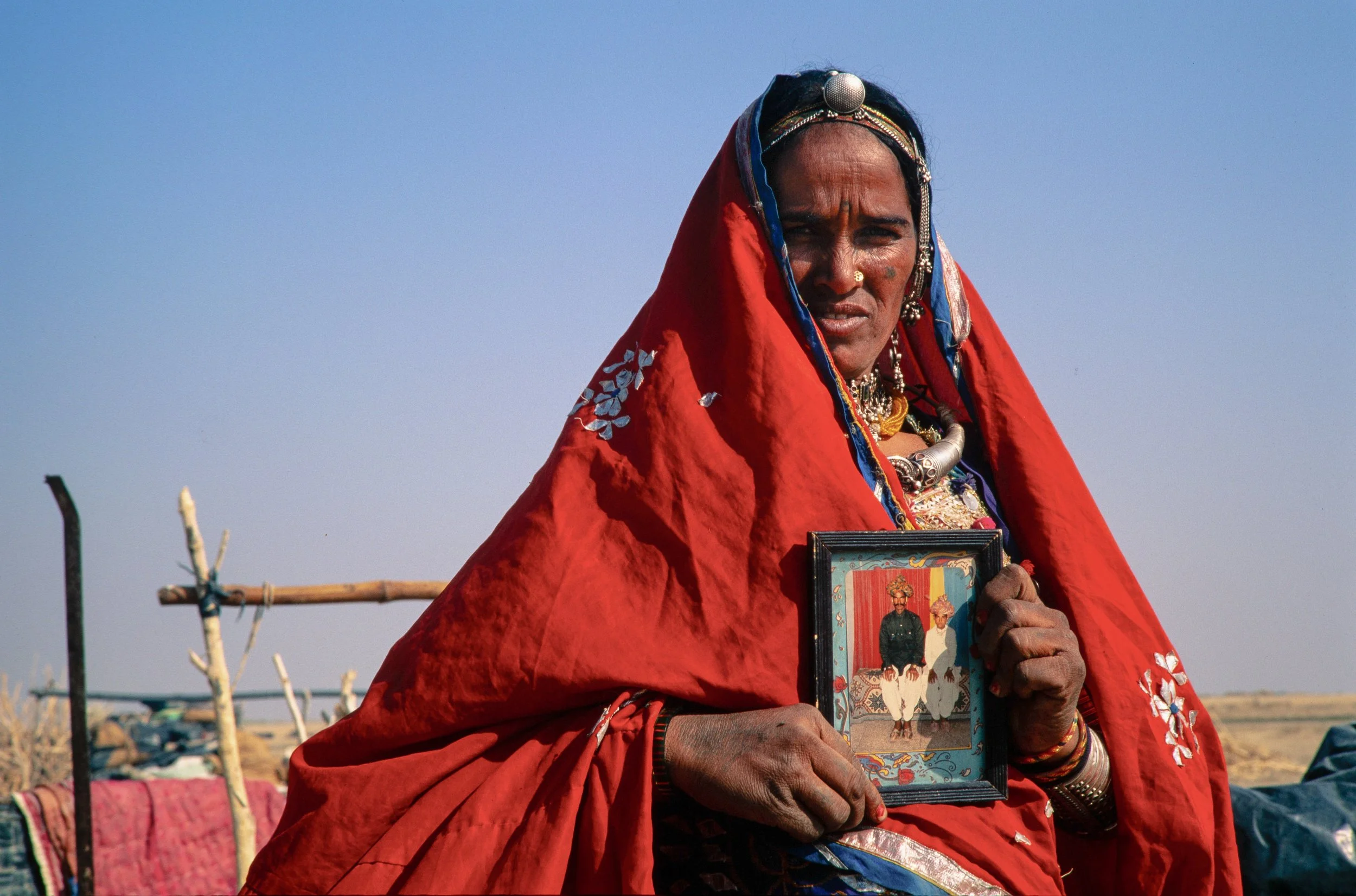
“Debra Kellner likes to tell the stories of women, especially those who are unseen.” - ELLE Magazine
FIELD NOTES
The Photographer & The Women of Rajasthan
“I wanted to give a voice to working women — ordinary women who live almost like everyone else. Yet these women are unique. By irrigating the desert, they are building a new civilization. Most are illiterate, armed only with a hoe, a shovel, and a rake — and still, they achieve the impossible: making water flow where it never has.”
— Debra Kellner, on why she chose to document the Rajasthan canal site.
How The Story Began
Years ago in Manhattan, I stumbled across a black and white postcard in a museum — a striking image of an Indian woman working on a construction site.
That photo stayed with me, and I tucked it inside my Notebook.
A few years later, while finishing another story on gypsy women in southern India, I kept pulling out the image of that woman. I started to look into the story and discovered major infrastructure works were underway in Rajasthan, including the construction of a vast canal. I decided to take a train and head North.” Sometimes, a story must be nurtured for years before it takes form.
A Voice For The Voiceless
I chose this area because the canal represents something almost unreal — an artificial water source in the middle of the desert. It is a project that migrant women have been part of from the very beginning. What moved me wasn’t the scale of the construction but the women behind it.
Women worked long, hard days.
Ordinary women whose lives were often overlooked.
I wanted to give a voice to the voiceless.
Not to idealise, but to show: they are here. They’ve always been here. Working, building, enduring.
Life On The Ground
They live here. Entire families. Three generations working side by side in the dust.
Most of these women began working around age fifteen. Their days are spent carrying stones, mixing cement, digging trenches. As the construction advances, so do their tents. Nothing is fixed, but life continues.
There’s no hospital. No corner shop. Older children watch the younger ones. I once saw a woman give birth on site — the cement mixer kept turning.
When I ask them about their lives, they speak of love, routine, strength. Of building a future. These are women’s stories — ordinary and extraordinary — if you take the time to listen.
A Mother Gives Birth
A look of relief comes over the expectant mother’s face.
She sees Dadi — the barefoot older woman who’s delivered more babies than anyone can remember. Dadi says she could do it blindfolded. No one dares even to dispute the possibility. The girl doesn’t need to worry. The labour begins right there on the edge of the construction site. No clinic. No privacy. Just the dust, the heat, and a few women gathered around.
Later, when I tell them I’ve never seen a baby born — let alone here, in the desert — they laugh. I ask, how many of your children are born on the canal? “All of us,” they say.
Born where they work. Where they dig. Where they survive.





